Start from Zero: Small with Infinitely Large (從零開始 — 無限的大小) is a group exhibition of established artists from Taiwan (including new work by Tsong Pu (莊普), Yao Jui-chung (姚瑞中) and Wu Tien-chang, 吳天章) — China and South Korea working in sculpture, painting and installation. With such a broad range of artists (35 in all), the gallery seems more interested in name recognition than any overall theme. That being said, there is much on view here and for anyone wanting a brief introduction to what preoccupies contemporary Asian artists — whether the continued interest in geometrical abstraction as shown by the work of Keng Hao-kang (耿?剛) or the heroic, yet humorously kitschy, sculptures of Yang Mao-lin (楊茂林) — you could do far worse.
■ Metaphysical Art Gallery (形而上畫廊), 7F, 219, Dunhua S Rd Sec 1, Taipei City (台北市敦化南路一段219號7樓), tel: (02) 2711-0055. Open Tuesdays to Sundays from 11am to 6:30pm
■ Until March 24
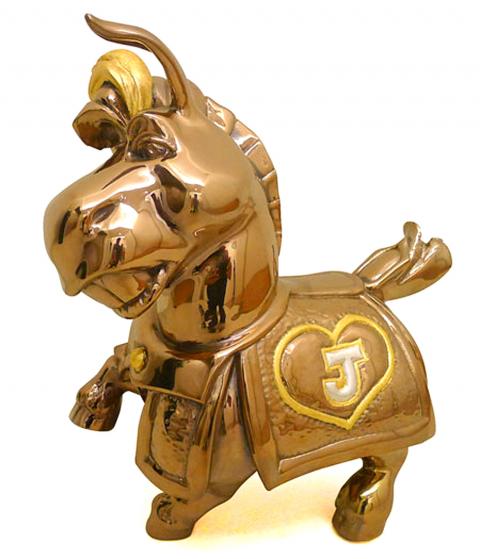
Photo courtesy of Metaphysical Art Gallery
VT Artsalon begins 2013 with two solo exhibitions of painting, The Beauties by Agi Chen (陳怡潔), and Dorothy Crash (桃樂絲墜落) by Kao Ya-ting (高雅婷). Chen creates paintings using cartoon and anime characters specified by members of a Facebook page called Circle Island. This collaborative method of artist and viewer provides an aesthetic record of a virtual community — their stories, desires and memories. Kao’s travels last year to the US and Brazil inspired her paintings in Dorothy Crash. More a travelogue, perhaps, then a coherent statement, Kao’s work reflects on her family and childhood memories through the locales she visits.
■ VT Art Salon (非常廟藝文空間), B1, 47 Yitong St, Taipei City (台北市伊通街47號B1), tel: (02) 2516-1060. Open Tuesdays through Thursdays from 1:30pm to 9pm, and Fridays and Saturdays from 1:30pm to 10pm
■ Until Thursday
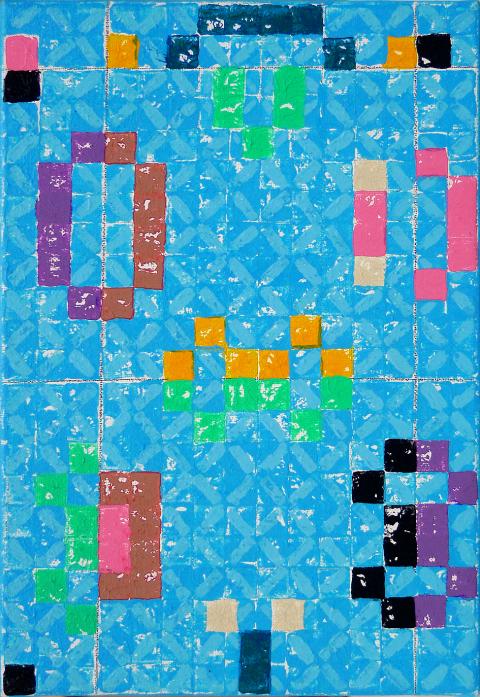
Photo courtesy of Metaphysical Art Gallery
Chinese artist Wang Yuping (王玉平) recently spent a month in Taipei where he captured the winter and rain on the streets of Danshui and Western Taipei, as well as recorded Taiwanese cuisine. Taipei, Beijing (台北‧北京) also includes a number of cityscape watercolors of Beijing. Wang often mixes acrylic paint with oil pastel or oil paint on handmade paper. The resulting works radiate a loose, dynamic and random atmosphere.
■ Eslite Gallery (誠品畫廊), 5F, 11 Songgao Rd, Taipei City (台北市松高路11號5樓), tel: (02) 8789-3388 X1588. Open Tuesdays to Sundays from 11am to 7pm
■ Until April 7
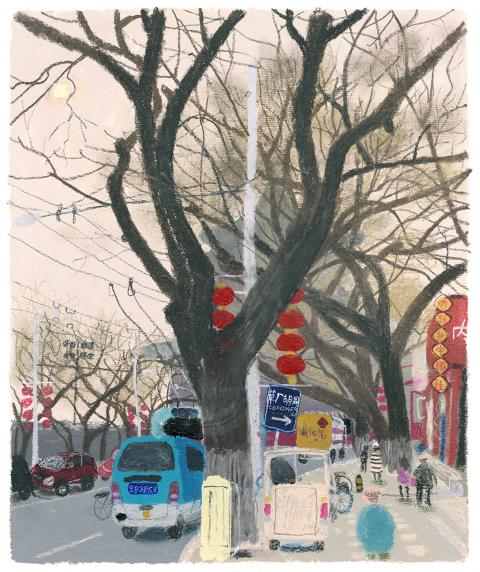
Photo courtesy of Eslite Gallery
Recalling the history and development of new media art, which began in the 1960s as a response to Dada and Conceptual Art and advances in scientific and industrial technologies, The Innovationists (因腦維新族) provides a comprehensive look at new media art through 18 works covering sound, light and video. According to the museum, the artists, hailing from the US, the UK, Japan, Hong Kong and Taiwan, unite an experimental ethos with concepts of technology, design and creativity. Among the more interesting pieces: An interactive and wearable device that sheds light on the culture of Otaku (what the museum blurb describes as “geeks” and “computer nerds”), kinetic installations that draw attention to environmental concerns and sculptures that present a new kind of urban architecture. The exhibition benefits from not only providing a brief introduction of new media art, but also illustrates how contemporary artists are building on a young tradition.
■ Museum of Contemporary Art, Taipei (MOCA, Taipei), 39 Changan W Rd, Taipei City (台北市長安西路39號), tel: (02) 2552-3720. Open Tuesdays to Sundays from 10am to 6pm. General admission: NT$50
■ Until April 4
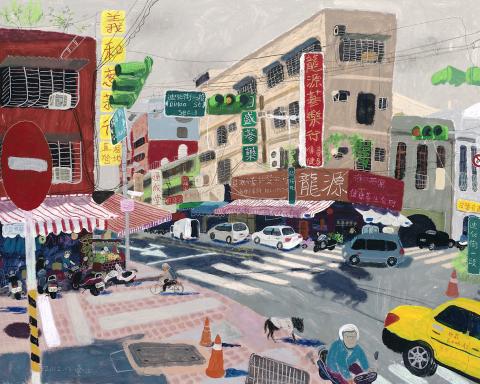
Photo courtesy of Eslite Gallery
Water preoccupies the thinking of the artists in Troubled Waters — especially its relationship to the land and how it has become a focus for global concerns about the environment. Aspects of heritage, history, representation, cultural discourse and our relationship to the means of production will also be explored through the work of the five artists and their accompanying texts. The exhibition includes single screen and spatial video installations, sound and photographic works, sculptural elements and light works.
■ Kuandu Museum of Fine Arts (關渡美術館), 1 Xueyuan Rd, Taipei City (台北市學園路1號), tel: (02) 2893-8870. Open Tuesdays to Sundays from 10am to 5pm
■ Begins March 8. Until May 5

As I finally slid into the warm embrace of the hot, clifftop pool, it was a serene moment of reflection. The sound of the river reflected off the cave walls, the white of our camping lights reflected off the dark, shimmering surface of the water, and I reflected on how fortunate I was to be here. After all, the beautiful walk through narrow canyons that had brought us here had been inaccessible for five years — and will be again soon. The day had started at the Huisun Forest Area (惠蓀林場), at the end of Nantou County Route 80, north and east

Specialty sandwiches loaded with the contents of an entire charcuterie board, overflowing with sauces, creams and all manner of creative add-ons, is perhaps one of the biggest global food trends of this year. From London to New York, lines form down the block for mortadella, burrata, pistachio and more stuffed between slices of fresh sourdough, rye or focaccia. To try the trend in Taipei, Munchies Mafia is for sure the spot — could this be the best sandwich in town? Carlos from Spain and Sergio from Mexico opened this spot just seven months ago. The two met working in the

Exceptions to the rule are sometimes revealing. For a brief few years, there was an emerging ideological split between the Democratic Progressive Party (DPP) and Chinese Nationalist Party (KMT) that appeared to be pushing the DPP in a direction that would be considered more liberal, and the KMT more conservative. In the previous column, “The KMT-DPP’s bureaucrat-led developmental state” (Dec. 11, page 12), we examined how Taiwan’s democratic system developed, and how both the two main parties largely accepted a similar consensus on how Taiwan should be run domestically and did not split along the left-right lines more familiar in
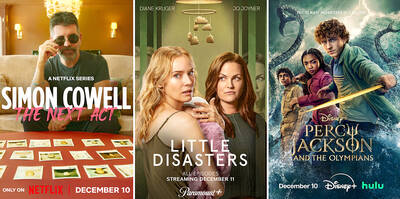
A six-episode, behind-the-scenes Disney+ docuseries about Taylor Swift’s Eras Tour and Rian Johnson’s third Knives Out movie, Wake Up Dead Man, are some of the new television, films, music and games headed to a device near you. Also among the streaming offerings worth your time this week: Chip and Joanna Gaines take on a big job revamping a small home in the mountains of Colorado, video gamers can skateboard through hell in Sam Eng’s Skate Story and Rob Reiner gets the band back together for Spinal Tap II: The End Continues. MOVIES ■ Rian Johnson’s third Knives Out movie, Wake Up Dead Man